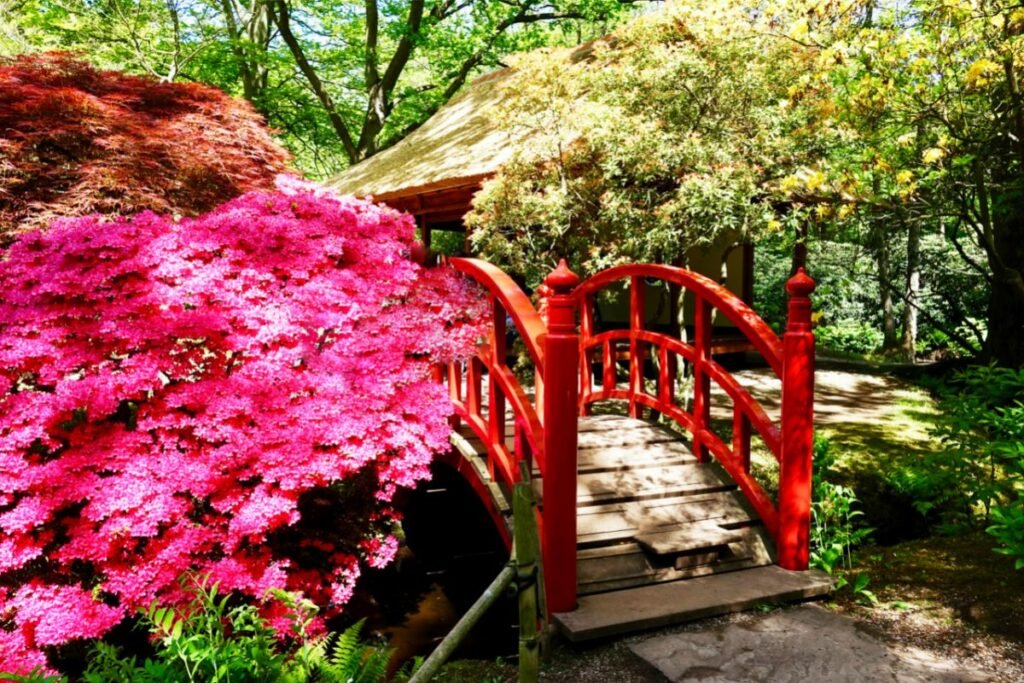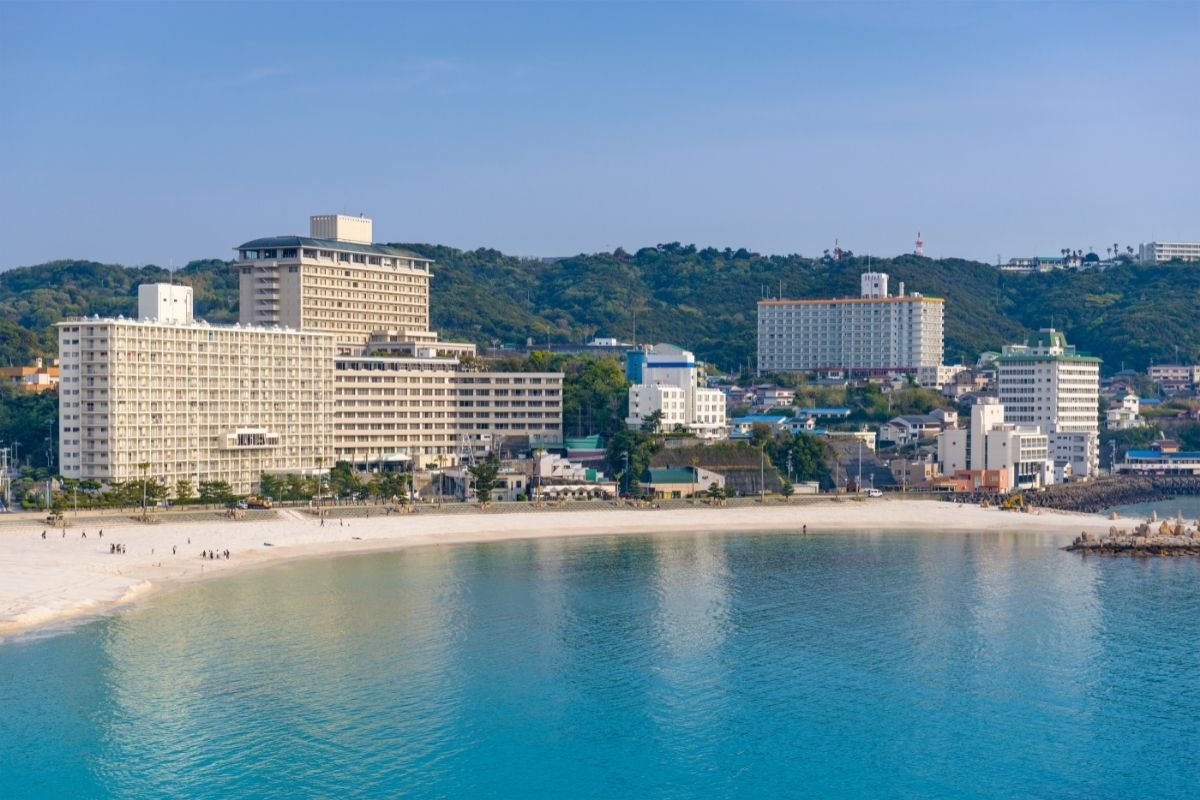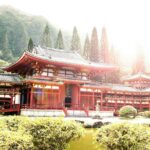Kyoto could be considered a garden lover’s paradise. If you’re looking to immerse yourself in the wonders that Japanese gardens have to offer, then you can’t go wrong with the ones in Kyoto.
Most of the best gardens can be found in the temples of Japan, and with over 1600 temples, you’re spoiled with choices with amazing gardens!
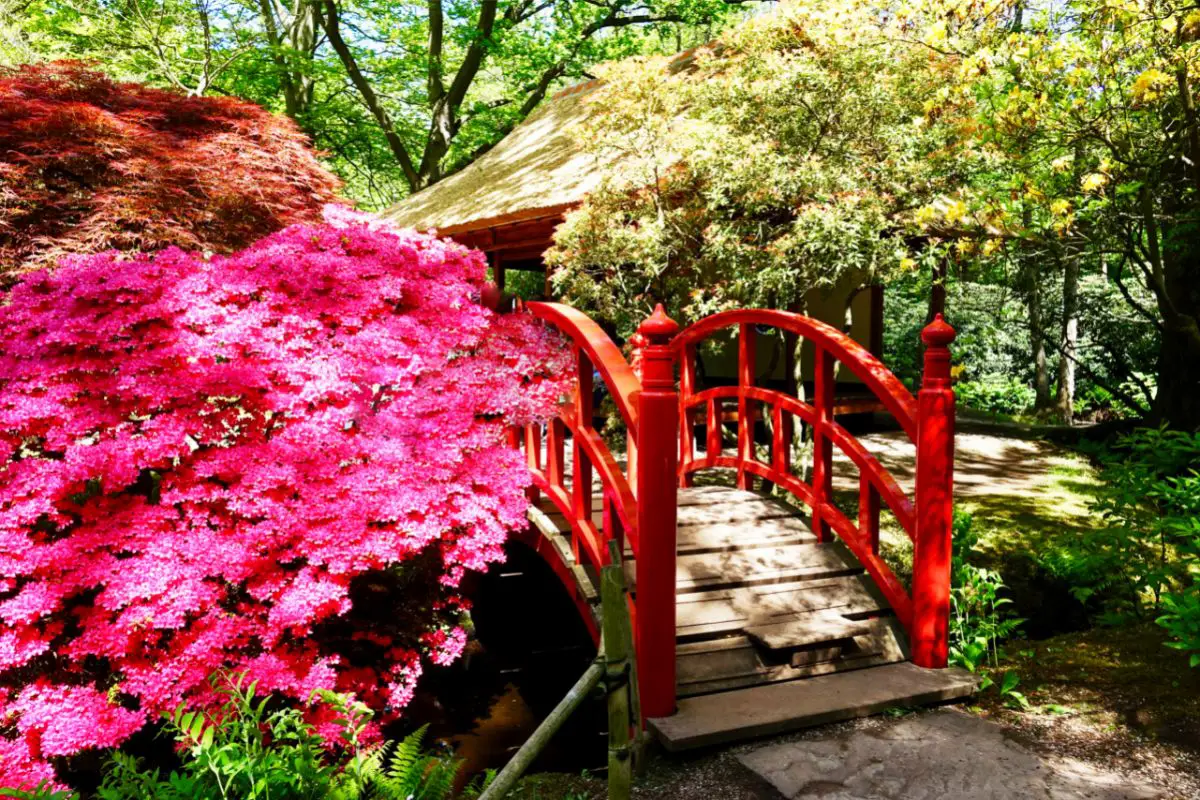
Plus, Kyoto has the highest concentration of beautiful gardens in the whole of Japan. Here, you’ll find every type of garden imaginable, from flamboyant stroll gardens intended for the Emperors and Shoguns to austere karesansui (Zen gardens).
Indeed, with so many gardens to choose from, it can sometimes be difficult to choose which to visit on your travels. As such, we have created a comprehensive guide looking at the best gardens Kyoto has to offer.
Use these gardens as a starting point, sampling some of the beauties, and then dig deeper to find your own favorite gardens in the myriad of temples across Kyoto.
1. Ginkaku-ji Temple
This Ginkaku-ji Temple is known as a Shogun stroll garden and is among the best traditional landscape gardens in the whole of Japan.
The garden itself is said to have been designed by the great painter and landscape architect, Saomi (1472-1525). It contains various styles such as a dry sand garden – known as the Sea of Silver Sand.
This is a particularly distinguished and well-known garden with its impressive cone of sand which is said to represent Mount Fuji.
Make sure to check out the beautiful moss gardens for the ponds, too. Where you’ll find islands and bridges with small streams and interesting plants.
To make the most of your visit, make sure to follow the walkway, strolling in a circular route.
2. Ryoan-ji Temple
Northwest Kyoto is home to some of the most famous Japanese Zan gardens in the world, and this Ryoan-ji temple is no exception.
The temple is situated near the Kinkaku-ji (Golden Pavilion) and features a karesansui – a dry landscape garden – it is something you may have never experienced before.
You’ll find 15 mysterious rocks which appear to be floating in a sea of pure white sand. What makes the garden so beautiful is its simplicity and size – measuring just 25m (82 feet) from east to west.
If you’re looking to avoid crowds, then it’s best to go early in the morning.
3. Heian Jingu Shrine
This Shrine is unique in that it was built for the 1,1000th anniversary of the city. As such, it is one of the best traditional gardens in Kyoto – with a beautiful color contrast to the city’s gray architecture.
Designed with the golden age of the Heian Period (794-1185) in mind, the garden itself is known for containing a large pond with a looming Chinese-inspired bridge across.
Whatever the season, the vermilion structure of the shrine stands out and is only enhanced by the nearby weeping cherry trees in the spring and irises and water lilies in the summer.
4. Tenryu-ji
Among the temple complexes is the Sogenchi Teiein (Sogen Pong Garden) which incorporated the encircling mountains Kemeyama and Arashiyama in its layout.
Unlike some others, this garden provides a true sense of the seasons changing, with many varieties of cherry blossom trees you can enjoy throughout spring. These include Yoshino, Shindare, Yae-zakura, and Yama-zakura.
Among this, you’ll find autumn foliage and snow-topped gardens in the winter.
5. Saiho-ji Temple
Saiho-ji Temple offers one of the most famous gardens in all of Japan. Designated as a place in the national Special Place of Scenic Beauty, the garden is hidden in moss (hence its other name, Koke-dera, or the Moss Temple).
The garden itself is arranged with a circular promenade all centered within a Golden Pond. Here, you can also find three teahouses where you can relax and enjoy the serene beauty.
Although ensure you’re booking in advance, otherwise you won’t be able to enter the gardens.
6. Nijo Castle
In the heart of historic Kyoto, you’ll find the Nijo castle on the picturesque grounds showcasing a grande wooden pile, ringed with a moat.
The highest here isn’t necessarily the castle itself, but instead, the adjoining gardens – landscaped with hundreds of stones, tranquil ponds, and mature plum and cherry trees. It is a sight to behold.
Visit the site in March or April and witness a view like no other – with the cherry blossoms in full bloom, creating a most magical scene.
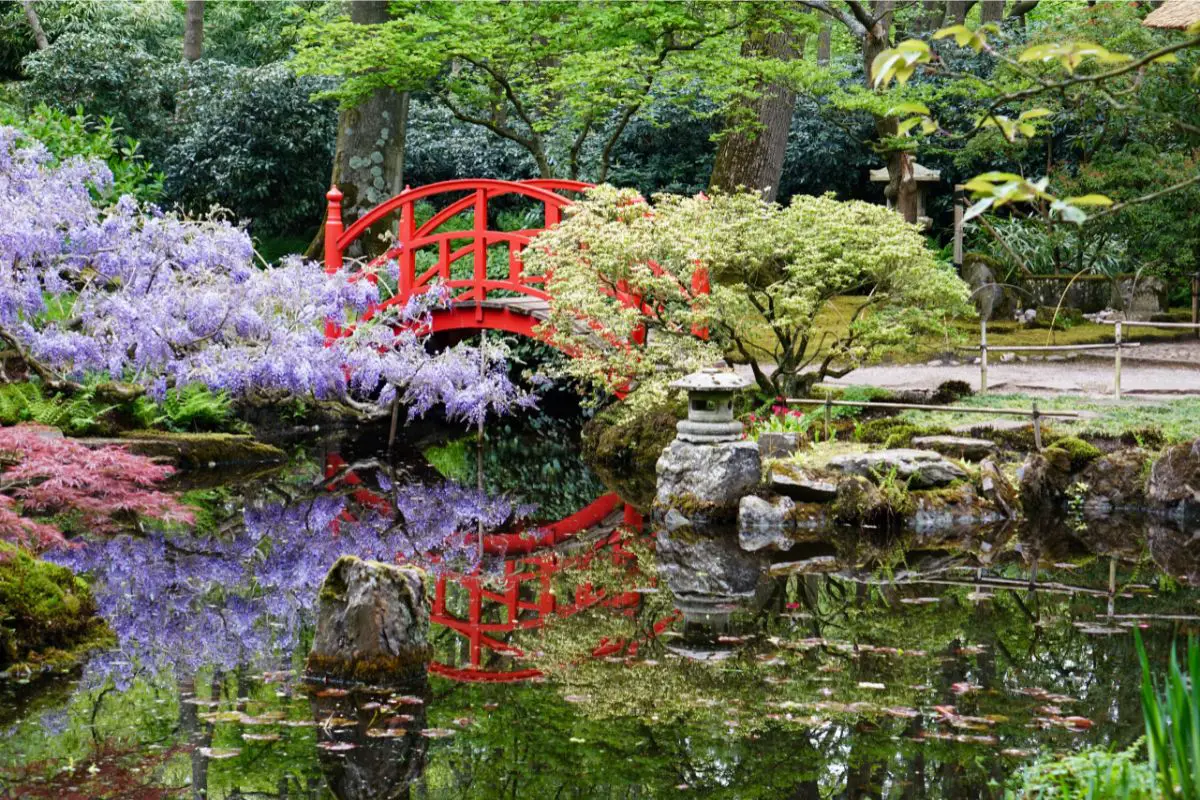
7. Tenryu-ji Temple
Located in the Arashiyama district, within the western outskirts of the city, you’ll find the Tenryu-ji Temple – one of the greatest Zen temples in Kyoto.
This Japanese stroll garden in particular is framed by looming mountains that appear as part of the landscape – creating a view that could be mistaken for a painting.
Around the Sogen Pond is a circular promenade. Due to its natural beauty, Tenryu-ji has been awarded a place in the Special Place of Scenic Beauty in Japan.
If you’re looking to visit this temple, the best time to do so would be during the spring when you’ll catch a glimpse of the breathtaking cherry blossoms. Alternatively, Fall offers some fiery foliage, scattered all around the garden and mountain.
8. Katsura Rikyu
Perched on the edge of the Katsura River, a visit to this imperial villa is a must. Feel as if you’re transported through time with a visit to 17th-century Japanese royalty.
Here, you’ll experience open-spaced gardens – which are clearly the centerpiece, being both meditative and tranquil.
Plus, there is a serene pond, a gorgeous bridge, and arching maple trees which bring the whole scene together.
Once you’ve booked the pre-booked tour, you’ll be thankful for the escape from the Kyoto crowds.
9. Nanzen-ji
Located in the east of Kyoto, hidden in the shadows of the Higashiyama Mountains, you’ll find Nanzen-ji – one of Koto’s most incredible Buddhist temples.
Here, you’ll find multi-storied wooden structures, spectacular rock gardens, and looming gates.
Opposite the Hojo – the residence of the former head priest – is where the Zen garden is located, fringed with boulders, photo-ready trees, and a ground that is raked to perfection (an extremely meditative process if you can catch it in action).
After your stroll around the garden, ensure you visit the nearby Junsei restaurant for a tofu feast while overlooking a small but impressive garden.
10. Murin-an
Created out of western fascination by a 19th-century politician, this garden represents some distinctly non-Japanese features.
For instance, you’ll find a villa with dark-painted walls, as well as paneled ceilings. This is encompassed on a large swathe of lawn (perhaps with British influence).
However, it does also have its Japanese elements, too. On the grounds, you’ll find tea rooms, and on the ground, there are outbreaks of moss spread by Laka Biwa – the biggest lake in Japan.
The enchanting scene is only highlighted by the mountainous landscape.
11. Kinkaku-ji
Arguably considered the most famous sight in Kyoto, Kinkaku-ji – otherwise known as the gold temple due to its striking golden exterior – attracts crowds of tourists every year, drawn to its bling beauty and mirrored lake reflection.
Rather than rush straight to the temple, take your time and appreciate the sprawling gardens in which the temple takes centerpiece.
Pine trees, moss-covered stones, and knobby mature fire, as well as fir poking through rocks – are all well worth your attention.
12. Shugakuin Imperial Villa
The Shugakuin Imperial Villa is surrounded by lush nature and looming mountains. Historical architecture, for instance, the Chinese-style building, still remains in the gardens – allowing you to walk through history.
Situated in one of the more elevated areas of Kyoto, the gardens offer a beautiful view of the surrounding countryside and Kyoto mountains.
Plus, the villa is managed by the Imperial Household Agency. Therefore, you might want to make sure you’re booking your tour in advance.
13. Enkouji
If you want to see the Fall foliage in its prime, the Enkouhi is the place to visit. In late November, you’ll find the temple encompassed in shrouds of orange, red, and gold.
In addition to its natural beauty, around the Buddhist temple, you’ll also find groves of lush bamboo with a Zen garden that is deliberately left unfinished.
This, of course, is left open to interpretation. Perhaps the gardener wanted the visitors to complete the image with their own minds.
The gravel here has been raked in such a way to resemble a cloudy sky, surrounding a stone set – said to resemble a flying dragon.
Final Thoughts…
Japan is known for its breathtaking gardens, and the ones in Kyoto truly take center stage. Since Kyoto has so many gardens, choosing the best ones to visit can sometimes be overwhelming.
From Mruin-an and Enkouji to Saiho-ji Temple and Nijo Castle, hopefully, this guide has informed you of the best gardens to stroll around during your visits.

